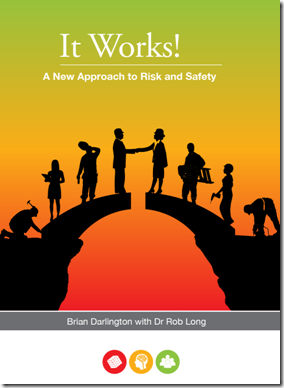Originally posted on February 17, 2021 @ 7:21 PM
Traditional Safety

Tradition stands in opposition to: discovery, learning, movement and innovation. Tradition establishes a stasis and orthodoxy so that a club/group/organization. Upon formation, traditions, gestures and rituals set a new orthodoxy, and are politicized so that nothing will change. Once a group has been politicized into a tradition then follows mantras and semi-religious rituals that further set in concrete accepted cultural norms. And this is how traditional risk and safety evolved.
Traditional risk and safety emerged out of a concern for: a lack of regulation, engineering and systemic focus on industrial harm. If one reads the book by Heinrich, Petersen and Roos (1931) Industrial Accident Prevention, you gain a good idea of how traditional safety started. It in this book one sees the rationalist, cognitivist logic of: ‘self-evident truths (p.20)’, dominoes (p.22), hierarchies (p.33), linear causation (p.49), pyramid logic (p.63), risk matrix models (p.172) and Behaviourism (p.230), that are commonly accepted traditions. Now, 90 years later, all these mythical symbols are enshrined in risk and safety mythology.
Once traditions are empowered by: symbolic myth, semiotics, mantras and politically infused tradition, they become impossible to move. More so, when one adopts the insanity of fallibility denying mantra, zero harm. There is nothing that speaks greater stasis than zero.
Part of establishing traditions as ‘self-evident truths’, is making semiotic (graphical) models an essential factor in: identity, curriculum and bodies of knowledge. It doesn’t matter that these are later demonstrated as false, Tradition itself creates a mythology that deems these ‘self evident truths’ to be so (true). Any challenge or disproof of such traditions must then be presented by ‘outsiders’ of the politically accepted circle of influence, usually by those considered: ‘renegades’, ‘mavericks’ or ‘dissenters’. Such was the position of Heinrich, Petersen and Roos in 1931. However, under the new tradition these founders were made the new orthodoxy.
It is so unfortunate that safety started in the way it did, anchored to the rigidity of objects-focused disciplines. What has developed from this tradition is a ‘false consciousness’ (https://safetyrisk.net/false-consciousness-and-perception-in-risk-and-safety/) politically formalized, so when people are inducted into the tradition, they assume that all the mumbo jumbo of traditional safety (https://safetyrisk.net/calculators-matrices-and-mumbo-jumbo-risk-assessment/) is a ‘self evident truth’.
The traditions of traditional risk and safety serve a similar function as baptism into a religion. Whatever tradition one is first immersed into, becomes the benchmark from which all judgment is made, especially of other transdisciplinary ideas that must be deemed ‘unorthodox’. This is the purpose of the AIHS Body of Knowledge, to cement into place the traditions of traditional safety. This is why safety makes no reference to helping or care in its mantras, traditions or discourse.
Next month we will be launching book 10 in the series on Social Psychology of Risk (SPoR) (https://www.humandymensions.com/shop/ ), a practical case study of changing the risk and safety tradition in Mondi (https://www.mondigroup.com/en/home/ ). The book is written by Brian Darlington (Group Head safety and Health) and myself, and recounts the difficult journey of transitioning away from traditional safety in an organization. One such challenging part of the journey has been the movement away from zero. The Mondi journey serves as an example of how an organisation can move away from traditional safety without ‘throwing the baby out with the bathwater’. This is what SPoR can do. And it is because SPoR is aware of the dangers of traditions that SPoR endeavours not to establish locked in traditions, but rather fluid approaches to risk and learning in organizing.
The book is entitled It Works, A New Approach to Risk and Safety. The book will be launched simultaneously in Europe and Australia and bill be available for purchase in April.



Rob Long says
Expecting release by late March. Pre-orders coming in fast. Great interest in SPoR globally. However, many can’t go for it because of zero.
Bernard Corden says
Well done Rob and Brian, a refreshing alternative from the formulaic and repetitive pseudo-academic bilge regurgitated by the Australian Hinstitute of Heinrich and Skinner.